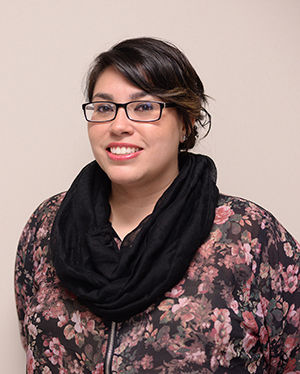Opinion: Safe space is not segregation

Amanda Paniagua is a graduate art history major and a columnist for The Kent Stater. Contact her at [email protected].
November 22, 2015
Last Friday, photographs of black tenured professors at Harvard Law School were defaced, with strips of black tape placed across their faces.
In the midst of numerous protests across the country, demanding that colleges and universities take seriously the day-to-day racism and discrimination faced by students of color has raised numerous forms of backlash, including the incident at Harvard Law School.
This past February, I sat in on a meeting in which various student leaders throughout the university gathered to discuss how student media on campus can better represent diversity and be more inclusive.
As the conversation progressed, I heard a white student share that they did not feel racially marginalized student groups were articulating (white) inclusiveness in advertising their events on campus.
When I taught a class a few semesters back, I had a few of my all white students lament that black students “segregate themselves” from the rest of the campus community.
In both of these examples, there seems to be a nervous uncertainty for white students when it comes to the racial dynamics of any university campus. In essence, this is the white millennial dilemma: one wants to be “color-blind” and treat everyone equally, but struggles with what it actually looks like in practice.
For starters, we need to address the flippant use of segregation when describing the act of racially marginalized students on any campus creating their own spaces and events.
Safe space is not segregation.
Historically, segregation was an enforced legal action carried out by the government and reaffirmed by social institutions. It was not a voluntary act. Those distinctions are absolutely necessary to remember.
Enforced segregation, historically, came from overt racism that surmised the white race was superior and destined to lead, in all things, more than any other race. As a result white society closed off public spaces to anyone who didn’t look like them.
When any racially marginalized group on a campus hosts an event, they are celebrating and addressing the concerns of their community that are often dismissed or completely erased from a larger, predominately white university.
But, they are not closing their spaces off to white students. To perceive it as such is to operate under a gross misunderstanding. And the fact that some students operate under such gross ignorance, means the university is failing our students.
Buzzwords like “diversity” and “inclusion” pay lip service to an abstract ideal but many universities refuse to actively put it into practice; in programming, in its hiring practice of full time tenured faculty from racially marginalized backgrounds and in the lack of developing intensive academic curriculum that grapples with social justice issues across all disciplines in a university system.
As a result, many students are ill-equipped to deal with these real-world issues when confronted with them on campus. Unless there is a purposeful attempt to offer understanding of complex social issues by the university structure, it is failing our students in developing social competency skills.
Amanda Anastasia Paniagua is an opinion writer for The Kent Stater. Contact her at [email protected].
























